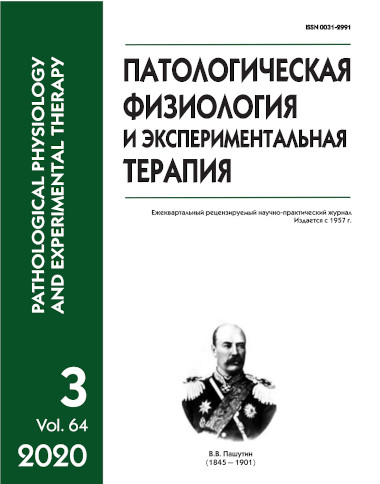Monitoring blood flow velocity in rat mesenteric venules
Abstract
Development of systems for recording and automatic processing of information about direct microvascular responses is an important task for a preclinical study of drugs influencing the microcirculation. The aim was to modify the method for on-line recording and processing of intravital images of microvessels to study changes in the blood flow velocity under disturbing impacts. Method. This article presents an improved technique for recording linear blood flow velocity in microvessels and for processing intravital images. Macroscope (Wild M420, Switzerland), lens (Makrozoom 6.3-32x), and high-speed digital camera (Basler acA2000-165uc USB3.0, Germany) with a CMOSIS CMV2000 matrix were used for visual tracking of changes in blood flow velocity. The camera allows obtaining full-frame, 2000x1000 pixel images with a frequency of 165 fps, and linear images with a frequency of 8000 fps to capture a wide range of linear blood flow velocities. The scale of an image obtained with the microscope-camera system is 0.7 microns per pixel, which makes it possible to measure velocities of 0.1 to 150 mm/s. Digitizing and analyzing images were performed with a MultiMedia Catalog software, Version 2.3 (MMCatalog, Russia). The analysis of blood flow velocity is based on direct measurement of the blood cell flow velocity. The velocity is measured by estimation of the shift of blood cell flow for a predetermined time period between two measurements. To this purpose, a linear marker oriented along the vessel is applied to the blood flow image in a selected section of the microvessel. Following the measurement onset, the camera switches to a linear mode along the marker every second. A series of 5–6 measurements of linear images is taken at definite time intervals. Then measurements are used for construction of optical slices and measurement of the relative shift of the curve. The curve shift is determined by estimating the sum of differences between two arrays of curve brightness in scanning from –20 to +20% of the current position. The position corresponding to the minimum sum of differences is considered the value of curve shift. This procedure is performed for all 5-6 pairs of measurements. From the obtained values of curve shifts a median is selected, which is used as a result of measuring the velocity. Then the camera is again switched to the full-frame shooting mode, which allows you to control the position of the marker in real time. During the experiment, the object may move due to movements or breathing of the animal. To adjust the marker position on the image, it is possible to change its position during the measurements. The program captures the obtained values of curve shits and, thereby, the blood flow velocity. Based on the blood flow velocity, the program allows adjusting the number of measurements per unit time, which makes it possible to maintain stability of velocity measurements. To reduce the effect of high-frequency noise the curves are smoothed using moving averages. The averaging intensity can be adjusted in the process of measurement. Recording of blood flow velocity in a selected area is performed continuously during the entire experiment. Experimental protocol: – recording of the initial blood flow for 180 s – recording of blood flow during laser irradiation for 300 s – recording of blood flow after the exposure for 300 s. Results. This method of recording blood flow velocity allows recording increases in venular blood flow velocity both during and after an exposure to laser irradiation (662 nm). Conclusion. The proposed technique for processing intravital images of blood flow makes it possible to record fast changes in blood flow velocity in microvessels under disturbing impacts in real time.






